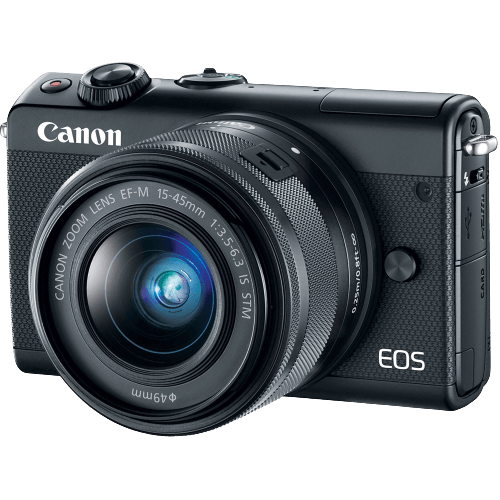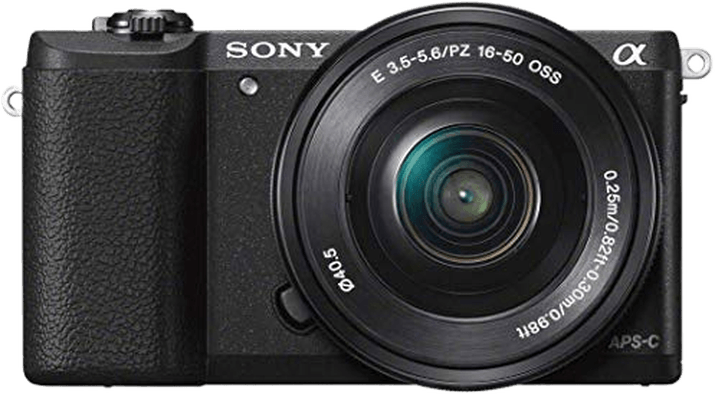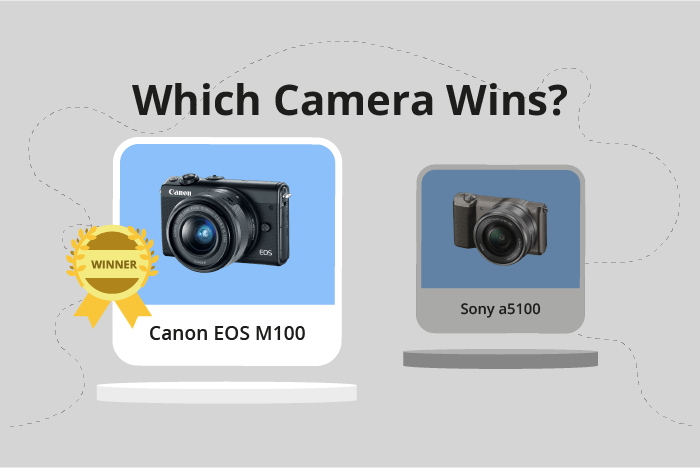Canon EOS M100 vs Sony a5100 Comparison
Canon EOS M100

Sony a5100

The Canon EOS M100 edges out the Sony a5100 with a score of 62/100 compared to 60/100. Both cameras are mirrorless and were released in the same price range, with the M100 at $600 and the a5100 at $550. They have similar dimensions, with the M100 measuring 108 x 67 x 35mm and the a5100 at 110 x 63 x 36mm.
The Canon M100 stands out due to its more recent release in 2017, potentially offering updated features and technology. However, the Sony a5100 has the advantage of being significantly lighter, weighing only 283g compared to the M100’s 436g.
While the Canon M100 takes a slight lead in our scoring, both cameras offer solid options for mirrorless camera enthusiasts. The choice ultimately depends on the user’s preferences for newer technology or a lighter camera body.
Canon EOS M100 vs Sony a5100 Video Performance
The Canon EOS M100 emerges as the winner in the video capabilities comparison with a score of 70/100, while the Sony a5100 scores 56/100. Both cameras share some common specifications, including Full HD video resolution with maximum dimensions of 1920 x 1080 and a maximum video frame rate of 60fps.
The Canon EOS M100 outperforms the Sony a5100 in terms of video capabilities due to its built-in time-lapse functionality. This feature allows users to capture and create stunning time-lapse videos without the need for additional equipment or software. The time-lapse functionality provides added versatility and creative options for videographers, making the EOS M100 a more appealing choice for those who prioritize video features in their camera selection.
On the other hand, the Sony a5100 has no significant advantage in video capabilities over the Canon EOS M100. Both cameras offer the same video resolution, dimensions, and frame rate. The lack of built-in time-lapse functionality in the a5100 makes it less competitive in this specific comparison.
Taking into account the video capabilities, the Canon EOS M100 is the superior choice due to its additional time-lapse feature. This added functionality gives users more creative options when capturing video content, making it a more versatile and appealing option for those focused on video capabilities. While the Sony a5100 does not offer any unique advantages in this area, it still provides the same basic video features as the EOS M100, making it a viable option for those who may not prioritize time-lapse capabilities.
Canon EOS M100 vs Sony a5100 Features and Benefits
The Canon EOS M100 outperforms the Sony a5100 in features, scoring 70/100 compared to the Sony’s 54/100. Both cameras have a 3-inch screen, touchscreen capabilities, flip screens, GPS, and WIFI. However, there are some key differences that give the Canon EOS M100 an edge over the Sony a5100.
The Canon EOS M100 has a higher screen resolution of 1,040,000 dots, while the Sony a5100 has a screen resolution of 921,600 dots. This higher resolution allows for a clearer and sharper image preview on the Canon EOS M100, providing a better user experience. Additionally, the Canon EOS M100 has Bluetooth connectivity, which the Sony a5100 lacks. This feature enables the Canon camera to connect to other devices more seamlessly and transfer files wirelessly with ease.
Despite the lower feature score, the Sony a5100 still has some advantages over the Canon EOS M100. Its flip screen is a 180-degree tiltable LCD, which is more flexible than the Canon’s flip screen. This feature allows for easier self-portraits and shooting at different angles. However, this advantage may not be significant enough to outweigh the benefits of the Canon EOS M100’s higher screen resolution and Bluetooth connectivity.
In comparing these two cameras, the Canon EOS M100 emerges as the winner due to its higher screen resolution and Bluetooth capabilities. The Sony a5100 does have a more flexible flip screen, but this does not compensate for its lower feature score. As a result, the Canon EOS M100 is the better camera in terms of features.
Canon EOS M100 vs Sony a5100 Storage and Battery
The Sony a5100 wins the storage and battery comparison with a score of 24 points, while the Canon EOS M100 scores 16 points. Both cameras have a single memory card slot and do not support USB charging. They accept SD, SDHC, and SDXC cards, with the Sony a5100 also compatible with Memory Stick Pro Duo and Pro-HG Duo cards.
The Sony a5100 outperforms the Canon EOS M100 in battery life, providing 400 shots per charge compared to the M100’s 295 shots. The a5100 uses the NP-FW50 battery, while the M100 uses the LP-E12 battery. This longer battery life makes the Sony a5100 a more reliable option for extended shooting sessions.
The Canon EOS M100 does not surpass the Sony a5100 in storage and battery aspects. As a result, the Sony a5100 proves to be the better choice in this comparison, offering greater compatibility in memory cards and a longer battery life.
Canon EOS M100 vs Sony a5100 – Our Verdict
Are you still undecided about which camera is right for you? Have a look at these popular comparisons that feature the Canon EOS M100 or the Sony a5100:

